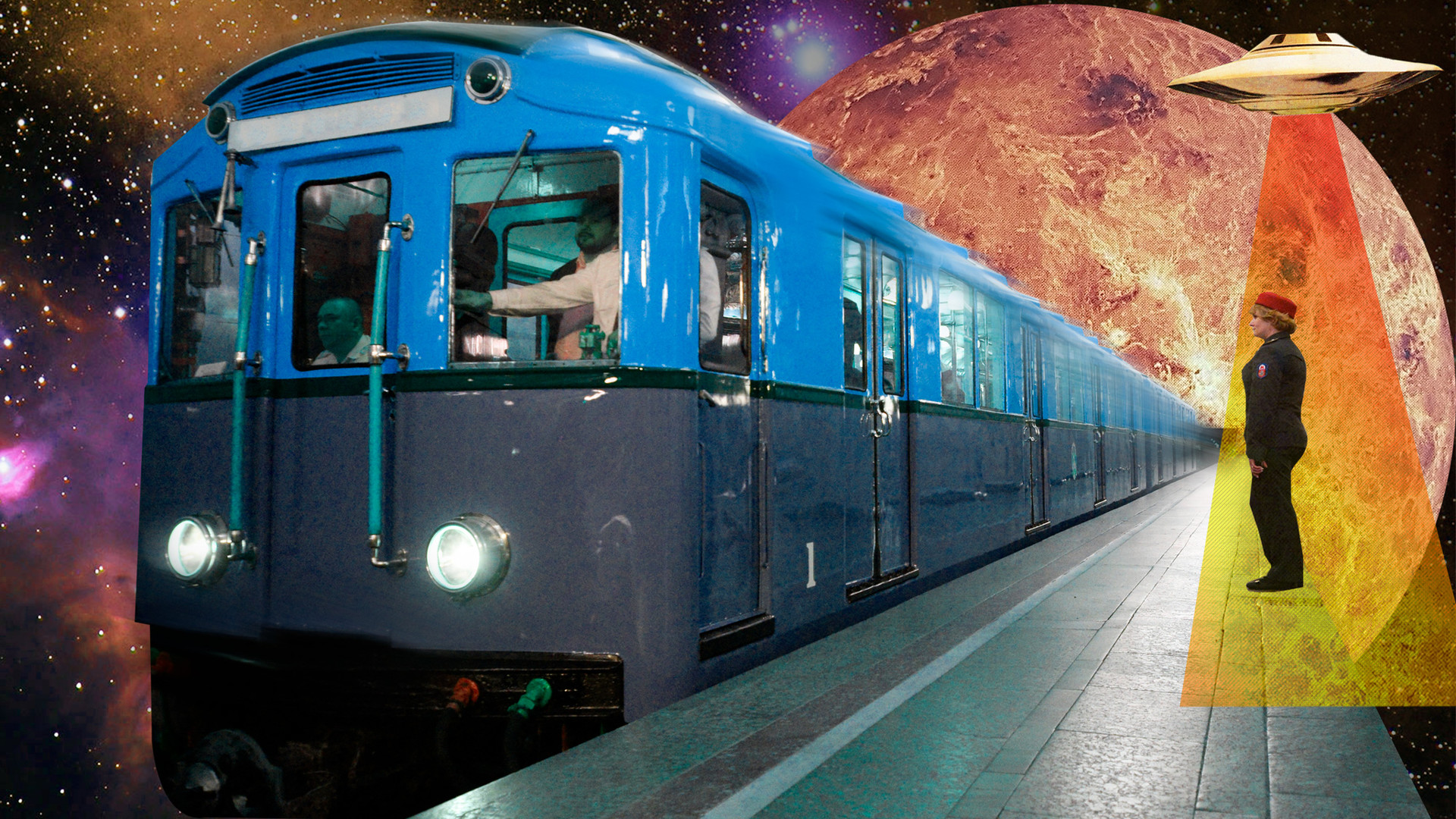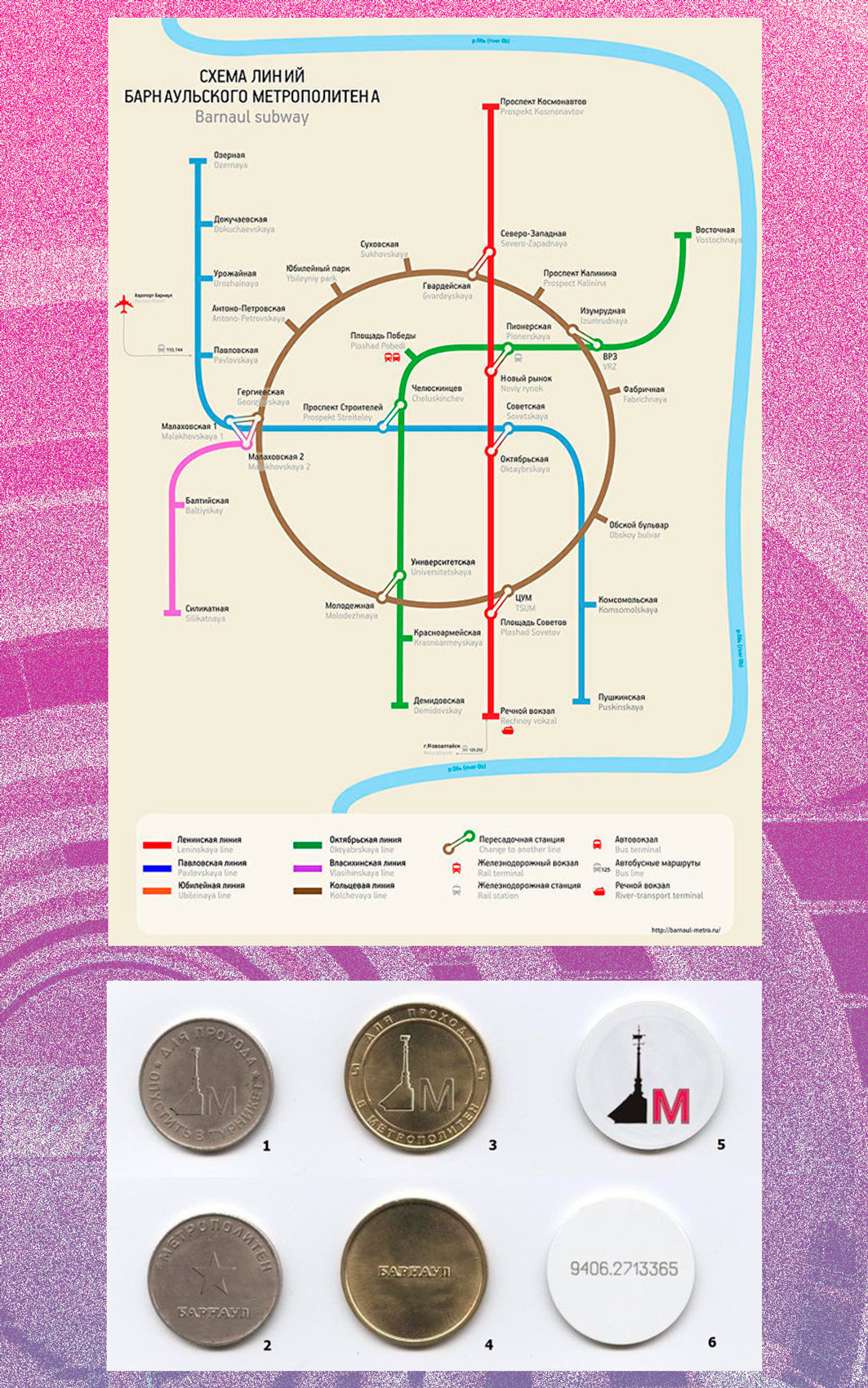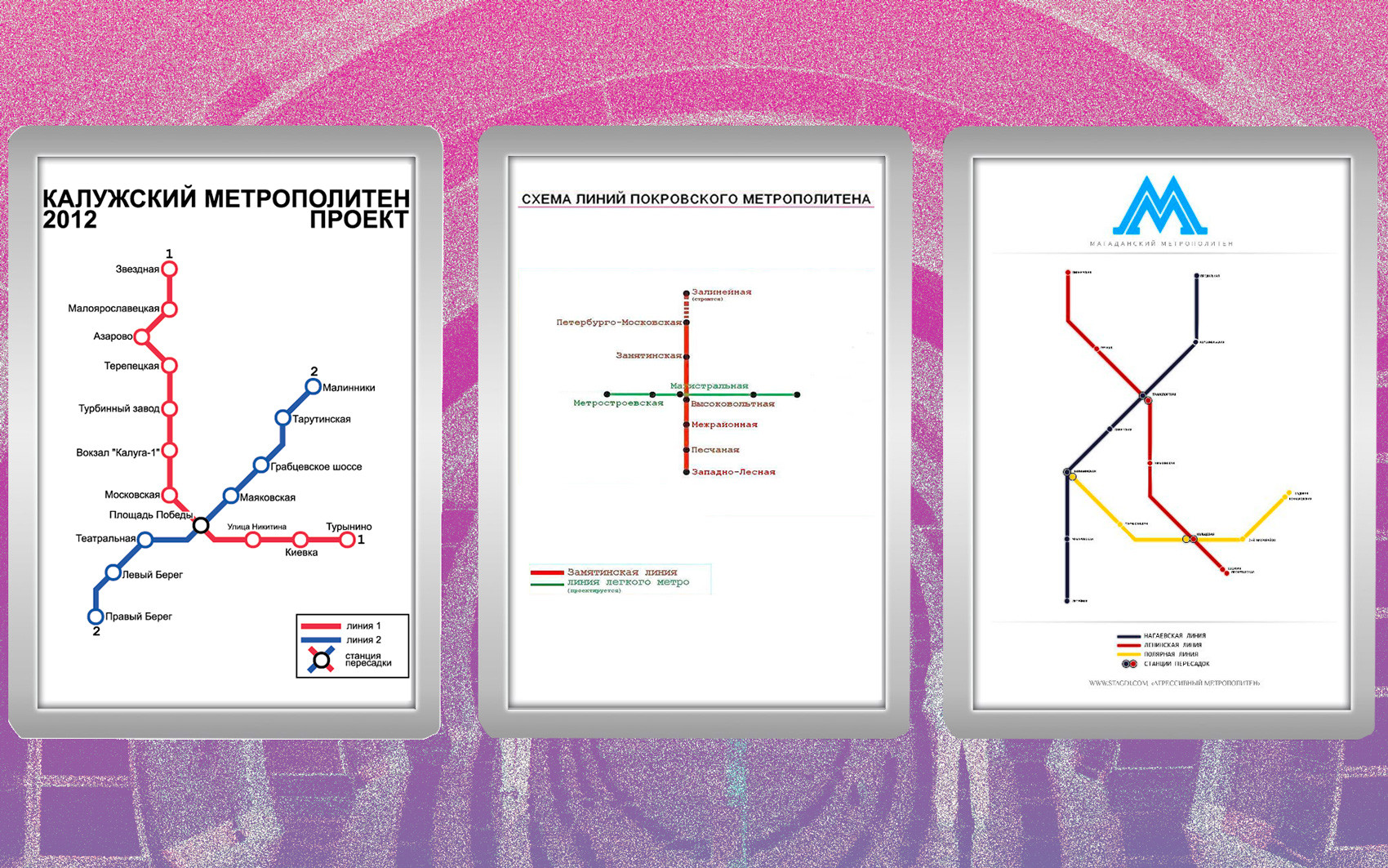
Imagine that you are going to visit an unfamiliar city and, looking up details about local transport, you come across the official website of a metro. But when you arrive there, you are in for a shock - no metro is to be found.
In Russia, only seven cities have a metro, and these are all major cities with a population of over a million. But many still hope that one day their city too will get a fast and convenient public transport system. And, even if they never do, the residents invent one and even turn it into a landmark. Don’t believe it? Read on!

Several years ago Russian media reported the tragicomic situation in which a New Yorker with Russian roots found herself.
She was visiting friends in Barnaul (Altai Territory) and on the internet she found a map of the city's metro.
After scouring the city for it, she realized that the metro was just a fiction, so she wrote a letter to Vladimir Putin, describing it as "a fraud on a Russia-wide scale".
It has proved impossible to trace the woman but a screenshot of her angry correspondence survives.
Barnaul's "metro" has an authentic-looking official website and public pages on the VKontakte and Twitter social networks. All this was invented by local resident Danil Churov, who got fed up with traffic jams in the city.
He drew up a metro map and posted it on his blog as an April Fool's joke, but the story spread and ended up in the media. Then he decided to develop his project further and soon his site about the metro had several thousand followers. The website has published reports about construction of new metro stations, news that the fare is to be reduced to eight rubles ($0.12) and the metro's operating times on New Year's Eve. And if someone points out that there is no metro in Barnaul, they are immediately told: "We've been traveling on it all our lives."
According to a legend invented by Churov, in 1972 a record harvest of grain was collected in the region and General Secretary Leonid Brezhnev gave instructions that a metro should be built in Barnaul as a reward for the workers. After a few years of heroic work the first six stations opened, and by the end of the 1980s the metro arrived in residential areas in the city's suburbs. Metro construction continued also in post-Soviet Russia. Furthermore, the metro was "visited" by the Swedish ambassador, by Dmitry Medvedev and by Vladimir Putin, the latter allocating several billion rubles to the development of the public transport system. Of course, nothing of the kind actually happened, but can't one have a dream?
Nowadays the website of the imaginary metro is inactive and the last entries on the VKontakte social network were made in 2017. And Danil Churov doesn't reply to messages.
The small town in Novgorod Region, near Moscow, is popular with tourists who come to look at the ancient Iversky Monastery and relax on Lake Valdai. In 2003, the editors of a website about the town decided to publish a guidebook about places of interest and designed it as a metro map. That is how the website with a detailed map and description of "stations" came into being.
Of course, some visitors to the town didn't understand that the metro was not real. "I live in Valdai and have never seen a single metro station in my life", says one of the comments on the website. "At the weekend we went to Valdai. There is no metro there!" complain some angry tourists.
But local entrepreneurs picked up the idea and started issuing tokens for travel on the metro. The town administration also liked the "metro", so sewer manholes marked "Metro" and even wrought iron signs marking "entrances" to White House, Zimogorye and City stations have recently appeared in the town.
The imaginary metro of this city in Tatarstan turns out to be a small but quite realistic one. The author of the project is unknown. According to the metro's "official" website, construction started in 1975 "in order to attract workers to KAMAZ" (one of Russia's biggest truck makers). And now it boasts about 12 miles of lines used by half of KAMAZ’s employees. The metro's map shows only 13 stations, three of which are "being built". By the way, the website also shows the stations themselves - and some of the photographs are so realistic you think perhaps Naberezhnye Chelny really does have a metro?
Lipetsk's "metro" was unveiled in 2002. Furthermore, it has a section dedicated to it on an unofficial website dedicated to the real public transport system of the city, which has a population of half a million.
The metro map looks like a miniature of a Moscow Metro map - a circle line with divergent radial lines. On the website you can read a fantastical story about how the authorities once wanted to turn Lipetsk into Russia's key industrial hub and how several stations of a metro had already been built, but the Second World War prevented its further development and, in the end, everything was hushed up.
The "metro" in this small town in southern Russia is a gift from Vladimir Kalinin, a resident of St. Petersburg. He spent his childhood in Korenovsk and, according to Kalinin, he "really wanted to make the life of its residents better and build a metro, even if it was only a virtual one".
According to his website, it opened in 2012 and was the first in the region. The route network has three lines with 18 stations. And you can get a map of it, absolutely free of charge, at any ticket office, moreover in 12 foreign languages, including Hindi.
Also, you can check out Korenovsk's metro on social media. Followers are particularly pleased with postings saying stating that fares are not being increased ("a journey will cost the same as before, one token") and that new stations are being opened.

In 2012 a metro appeared in Kaluga. It was supposed to have two lines, with one interchange station. A similar map has also been drawn up for the village of Pokrovka in Moscow Region. In Magadan in the Far East they have proposed as many as three metro lines.
The idea of an imaginary metro has inspired the STAGDI design studio in Krasnoyarsk: They tried to imagine how a metro would look in different Siberian cities. "Happiness is a metro", say the designers, who suggest that people imagine metro maps for Khanty-Mansiysk, Chita, Blagoveshchensk, Izhevsk and Petropavlovsk-Kamchatsky.
If using any of Russia Beyond's content, partly or in full, always provide an active hyperlink to the original material.
Subscribe
to our newsletter!
Get the week's best stories straight to your inbox